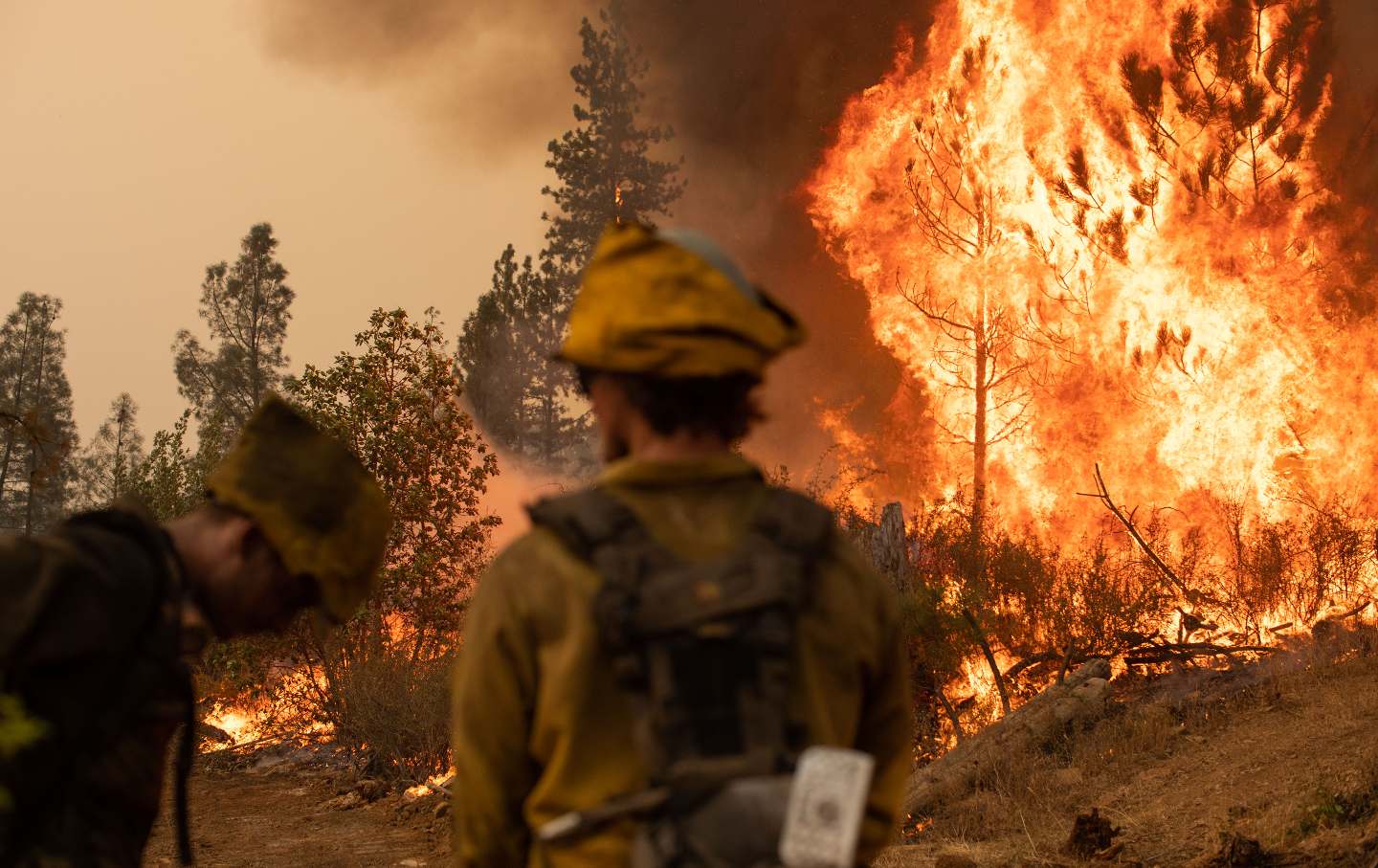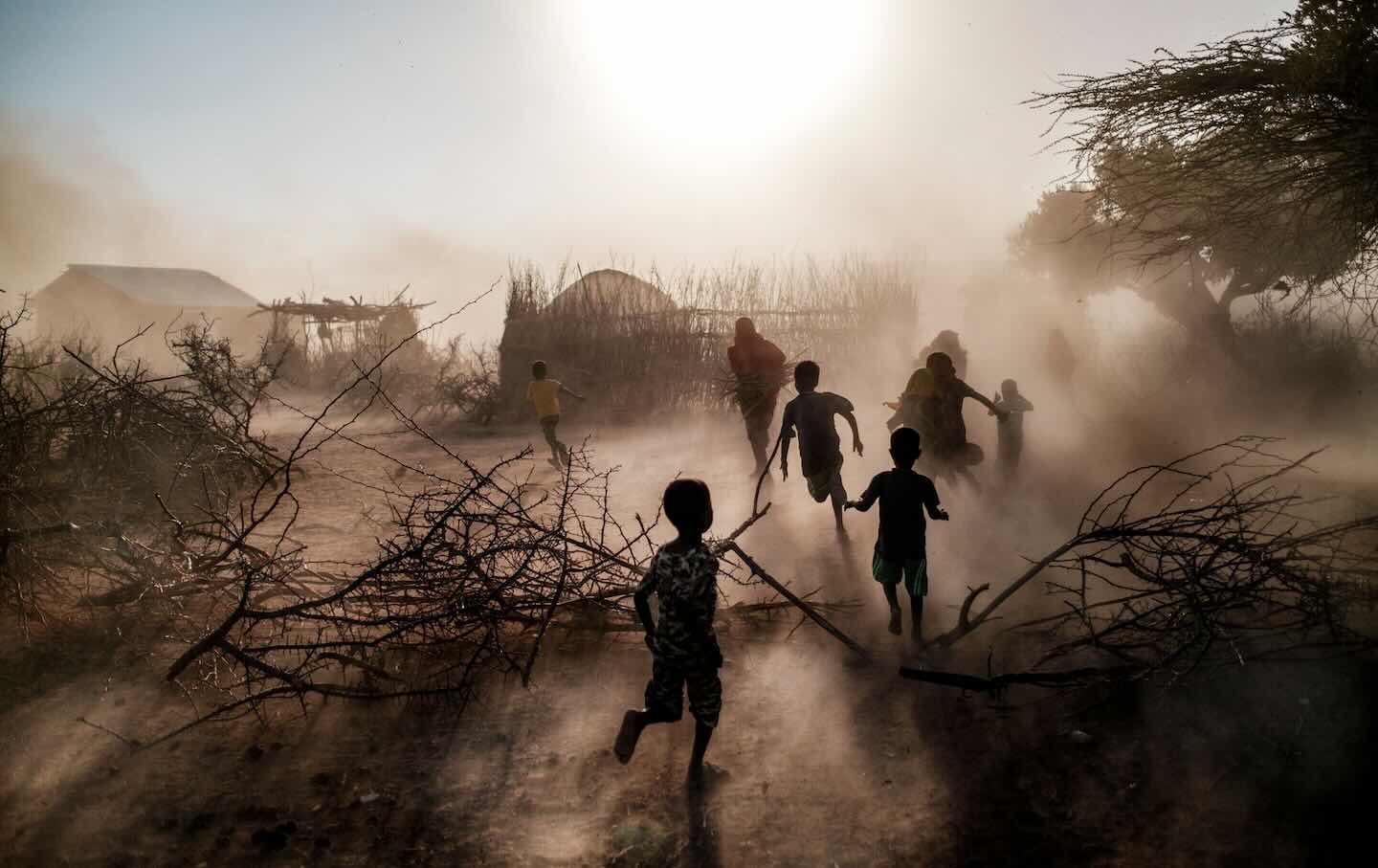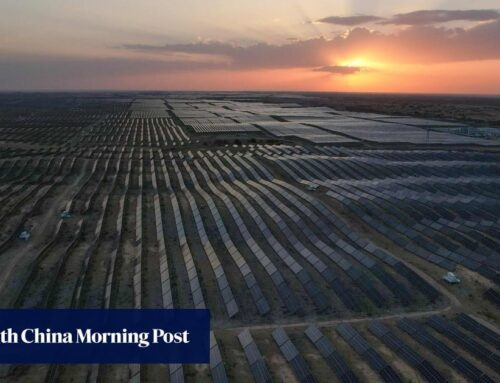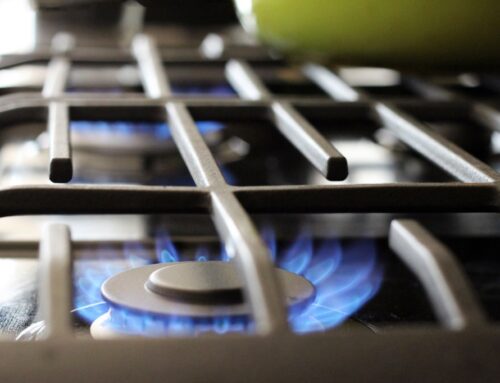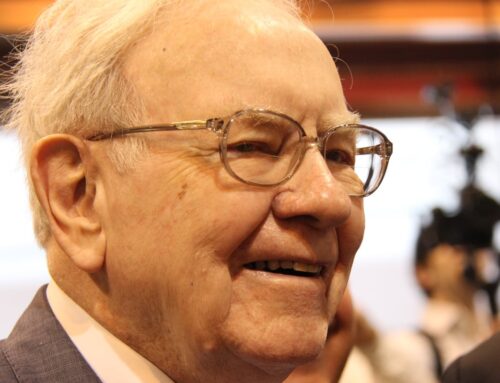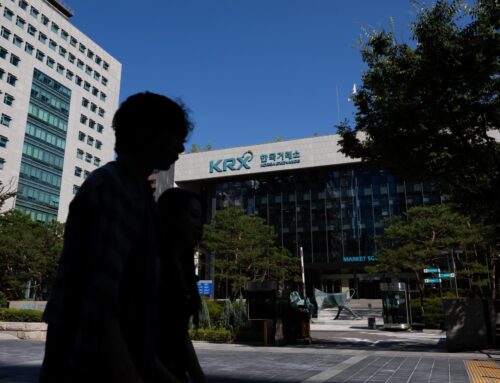If You Think Multinational Mining Interests Want to Save the Environment, I’ve Got a Bridg
May 22, 2025
May 22, 2025
A sacred site for Native Americans is on the verge of being destroyed for profit, and profit alone—just one more colonial conquest of lands in the American West.
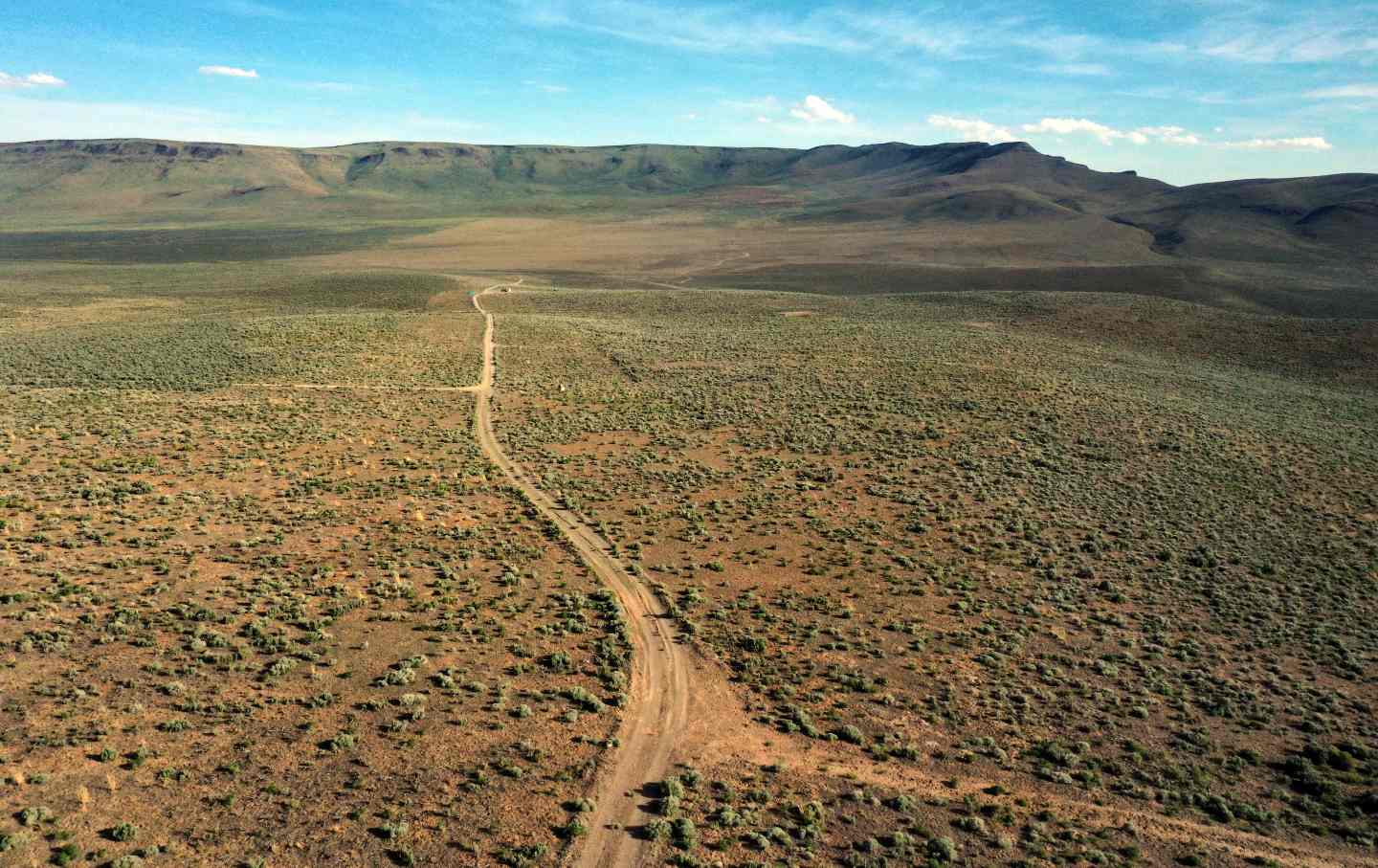
This article originally appeared at TomDispatch.com. To stay on top of important articles like these, sign up to receive the latest updates from TomDispatch.com.
Ancient oak trees rise above gigantic boulders scattered across a high desert mesa in Arizona’s Tonto National Forest. This is Oak Flat (Chi’ chil Bildagoteel), a sacred site for Native Americans, including the Western and San Carlos Apache. And like many other lands across the West, it’s under grave threat from multinational mining interests, all in the name of climate mitigation, but most importantly, for the money.
Oak Flat is as stunning as it is vast, and even though it’s only an hour’s drive from the concrete sprawl of Phoenix, when you’re there, you feel as if you’re on an entirely different planet. When I say that the place is sacred, if anything I may be underestimating its significance. To the Apache and others, Oak Flat is the birthplace of life on Earth, their spiritual Eden.
“Here is the creation story of where a woman came to be, and where the holy ones came together,” Wendsler Nosie, tribal leader of the San Carlos Apache tribe, explains. “This is where we originated as people.”
Beneath this biologically rich landscape, home to a variety of dry-land species including the endangered hedgehog cacti and the ocelot wildcat, lies a rich deposit of copper, the conductive metal vital for the technologies needed to power the world’s green-energy transition.
The Apache and environmentalists have been fighting a legal battle over the future of Oak Flat, which the US government promised to protect in the 1852 Treaty of Santa Fe. Listed in the National Register of Historic Places, Oak Flat has been shielded from mining for the last 60 years. However, that protective status came under attack in 2014 when Arizona Senators John McCain and Jeff Flake undermined the agreement by attaching a rider to the National Defense Authorization Act, handing over 2,400 acres of Oak Flat to Resolution Copper, a joint mining venture between Rio Tinto, the world’s second largest metals and mining corporation, and BHP, possibly the world’s largest mining company. It was a blatant and sinister land grab.
The legislation, later signed into law by President Barack Obama, intentionally undermined the National Environmental Policy Act through a subtle maneuver that allowed the mine’s approval to proceed, regardless of any adverse environmental impact findings that might result, by shortening the approval process before a judicial review could take place. The Arizona senators had manipulated the process to benefit the mining conglomerates, no matter the damage it would cause, which, by any measure, would be insurmountable. The two senators didn’t come up with that backroom scheme on their own. Flake had spent time as a paid lobbyist for Rio Tinto and, in 2014, the late John McCain was the company’s top recipient of campaign contributions.
The plan today, according to the mining juggernaut, is to gut Oak Flat using a novel process called “block cave mining,” which involves blasting the copper ore from below, causing the ground above it to collapse under its own weight. The results would be catastrophic, creating a 1.8 mile-wide, 1,000 foot-deep crater.
Such impacts are apparently just the cost of doing business (and supposedly fighting climate change) these days. Resolution Copper estimates that mining Oak Flat could yield more than 40 billion tons of copper over 40 years, generating more than $140 billion in profits and providing enough copper to power 200 million electric vehicles (EVs). In addition to the massive hole that the mine would create, the toxic waste from the operation, expected in the end to be 50 stories high and cover an area three times larger than San Francisco’s Golden Gate Park, would also bury an unknown number of historic and traditional cultural sites of the Apaches and other neighboring Indigenous nations.
Ultimately, Oak Flat would simply be rendered unrecognizable.
“You can’t tamper with these sacred places. We’re talking about deities; we’re talking about angels; we’re talking about where the beginning of time to the end of time will never be lost,” said Apache tribal leader Wendsler Nosie in a virtual press conference in 2021. “Is this the way we are now?” he asked. “Is this the way we believe—to allow these places that give the gift of life to be destroyed?”
On January 15, 2021, not long after Donald Trump’s fanatics stormed the Capitol, the US Forest Service released its final 400-page Environmental Impact Statement, which acknowledged that “Oak Flat is a sacred place to the Western Apache, Yavapai, O’odham, Hopi, and Zuni. It is a place where rituals are performed, and resources are gathered; its loss would be an indescribable hardship to those peoples.”
The tribes and allies, under the banner of Apache Stronghold, a nonprofit, quickly filed a lawsuit in federal court to stop the land transfer, arguing that it violated their treaty rights and religious freedom. The group, however, would lose both that lawsuit and an appeal that reached the Ninth Circuit Court. Then, last September, after a two-month caravan across the states to Washington, DC, Apache Stronghold formally presented its case to the Supreme Court in a last-ditch effort, hoping that the right-leaning court would at least be receptive to its religious freedom argument.
Then came Trump. While SCOTUS has yet to take up the case, Trump’s administration has forged ahead, speeding up the mine’s approval process. It was part of its plan to quickly increase the domestic production of so-called critical minerals, primarily used in renewable energies. The news was not taken lightly. Apache Stronghold’s lawyers quickly filed an emergency stay motion in a US District Court in late April, hoping to pause Trump’s reckless acceleration. A hearing took place on May 7 in Phoenix and, on May 9, the judge ruled in favor of Apache Stronghold, granting a stay that expires after SCOTUS either denies the petition or rules on the case.
“The US government is rushing to give away our spiritual home before the courts can even rule—just like it rushed to erase Native people for generations,” said Nosie of Apache Stronghold following the decision. “This is the same violent pattern we have seen for centuries.”
While Trump’s antagonism toward Native sovereignty isn’t surprising, it may be puzzling why his administration is so concerned with the nation’s supply of critical minerals like Oak Flat’s copper. As he’s made clear, Trump believes climate change to be a hoax invented by China, and he’s done his best to impede the growth of the renewable energy sector. Yet, like many of Trump’s other bombastic policy proposals, the undercurrents here appear more driven by ego than by ideology.
If Donald Trump has one defining trait, it’s his need to dominate in almost any imaginable situation. Illustrated by his falsehoods and refusal to acknowledge Joe Biden’s victory in the 2020 election, he not only hates losing (and that’s putting it mildly!) but also refuses to concede defeat. And one thing is certain: The United States is losing control over the world’s mineral resources to China.
When it comes to critical minerals, the Chinese not only control most of the mines but also maintain and operate the majority of the world’s processing facilities. No other country comes close in the race for critical minerals. China finances the majority of critical mineral projects worldwide, totaling $57 billion over the past 20 years. It holds 35 percent of the globe’s reserves, but is responsible for 70 percent of their extraction and 87 percent of their processing on this planet.
In contrast, the United States relies entirely on China and other places for 12 of the 50 minerals on its “List of Critical Minerals” and is more than 50 percent dependent on imports for 28 more. Those minerals include metals like aluminum, cobalt, graphite, and lithium. And being “critical” doesn’t mean they are in short supply. For instance, believe it or not, the US already has an excess supply of copper, which makes the proposed mine at Oak Flat all the more unnecessary and insidious. Adding to the absurdity, China’s Chinalco conglomerate holds almost 15 percent of Rio Tinto, so mining Oak Flat will, in the end, still benefit the Chinese.
While Biden’s Department of Energy allocated $19.5 million to increase domestic production of such minerals, $43 million to enhance battery technologies for EVs, and another $150 million to build processing facilities, that amount pales in comparison to China’s $230 billion investment in its EV market from 2009 to 2023 alone. Unsurprisingly, China now accounts for 62 percent of the world’s EVs and 77 percent of the batteries that power them. And it’s not just about the green tech. All those minerals shipped from China (80 percent of the US supply) are also used as components for Artificial Intelligence and in the work of carmakers, aerospace companies, the defense industry, and others.
Popular
“swipe left below to view more authors”Swipe →
We know Trump doesn’t care about the climate or green energy policies, which he’s called a “scam.” Still, he understands that whoever commands those resources has the power to navigate the future of the global economy. Today, 30 percent of the world’s energy is produced by renewables (up 10 percent since 2010). Although fossil fuels still dominate, green energy is set to grow 90 percent by 2030. Nothing that Trump does can alter this trajectory—and now he evidently wants in.
On April 24, the Department of the Interior, after being prodded by Trump, announced that it would eliminate environmental reviews and fast-track the development of oil, gas, and critical minerals on public lands.
“The United States cannot afford to wait,” Interior Secretary Doug Burgum said in a statement. “We are cutting through unnecessary delays to fast-track the development of American energy and critical minerals—resources that are essential to our economy, our military readiness, and our global competitiveness.”
Burgum was sounding the alarm, even if there was no real bell to ring. After all, the US already has more fossil fuels than it knows what to do with. Weeks earlier, amid Trump’s escalating tariff war, China had retaliated by threatening to end shipments of critical minerals to the United States, all but flatlining Trump’s hopes of reinvigorating the American manufacturing sector.
There were, however, a couple of problems with Burgum’s edict (and Trump’s emergency energy decree that preceded it). First, it takes a significant amount of time to get a mine up and running (on average, 16 years), and it’s not always environmental reviews that are to blame. You need to find the resource, gather investors, and build out the necessary infrastructure, which may include roads and other facilities. None of this will happen quickly enough to offset China’s threat, even without environmental reviews. Second, although the US does have a wealth of critical minerals in its backyard, it doesn’t maintain the processing facilities needed to handle them. Mining a bunch of new metals without refinement centers is an exercise in futility, akin to pumping millions of gallons of oil without the refineries to turn it all into gasoline.
Even so, this reality hasn’t stopped the over-eager Trump, who worked to cut a deal with Ukraine for access to its mineral wealth and has his sights set on nabbing Greenland’s as well. No doubt, Elon Musk, who has long criticized the United States for lagging behind China when it comes to mineral dominance, has been advising Trump to get a move on, even if it’s too late.
What such critical mineral mining means for the future of the climate remains uncertain. Yet, as Trump has made clear, his insistence that the United States should open public lands for exploration isn’t about reducing carbon emissions at all. In fact, he’s hell-bent on increasing them. It’s about bolstering US capitalism, enriching mining companies, and, well, Making America (and undoubtedly Donald Trump) Great Again.
It matters little that America was never great for the Apache, who had their lands stolen, their treaty rights shredded, and now face yet another act of cultural annihilation at Oak Flat. Trump cares nothing about human rights, ecology, or the planet’s future (beyond him). He sees every issue as a competitive market transaction. Where there’s money to be made, nothing will stand in his way—surely not some nettlesome endangered species or an Indigenous holy site.
In this sense, eerily enough, Trump is not unlike the line of presidents who came before him. George W. Bush, who was swept into power in 2000 by a wave of oil money, spurred the fracking boom. Barack Obama, regarded as the country’s first climate president, also increased fossil-fuel extraction by bolstering shale oil extraction (as did Joe Biden, despite his gestures toward dealing with climate change). US oil production saw an 88 percent increase during Obama’s tenure.
“You wouldn’t always know it, but [oil production] went up every year I was president,” Obama bragged to a group at Rice University’s Baker Institute in 2018. “Suddenly America’s like the biggest oil producer and the biggest gas, that was me, people.”
In a similarly chest-thumping style, Trump is confident that America’s future will be driven by whatever resources he’s able to seize. But the stock markets (and polls) harbor doubts about his vision, fully aware that decades of market integration have set the stage in favor of Beijing. Trump’s appetite for fossil fuels and (no matter that he’s dismissed climate change) critical minerals, his erratic tariffs, and a few executive orders will make little difference. American capitalism is too deeply intertwined with foreign markets for the US economy to go it alone.
None of this changes the fact that sacred Apache lands are set to be ravaged in the name of “green” energy, economic independence, or whatever the White House proclaims to be its latest justification. In truth, Oak Flat is on the verge of being destroyed for profit, and profit alone—just one more colonial conquest of Native lands in the American West.
“The holy places are rumbling at what is happening in the world and in the country,” writes Nosie. “But the prophecy [says] that one day it is not going to rumble anymore. When that day comes, that means we have destroyed everything.”
Trump’s rampant mining and drilling could potentially be the ultimate act of destruction that the prophets have predicted. If we are to learn one lesson from our country’s history, in fact, it is that when destruction reigns, the pillager alone stands victorious, leaving everyone else defeated. It’s a twisted, genocidal ideology and a truly American one that has become all too familiar in these ever-darkening days.
More from The Nation

As Israel expands its settlements in the West Bank, it has destroyed forests and boosted CO2 emissions.
Search
RECENT PRESS RELEASES
Related Post


